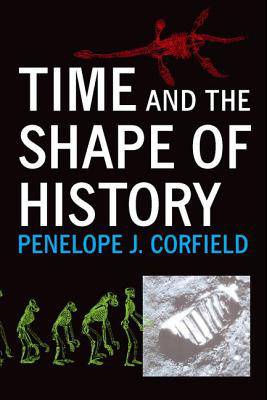
- Afhalen na 1 uur in een winkel met voorraad
- Gratis thuislevering in België vanaf € 30
- Ruim aanbod met 7 miljoen producten
- Afhalen na 1 uur in een winkel met voorraad
- Gratis thuislevering in België vanaf € 30
- Ruim aanbod met 7 miljoen producten
Zoeken
Omschrijving
This ambitious book explores the relationship between time and history and shows how an appreciation of long-term time helps to make sense of the past. The book is devoted to a wide-ranging analysis of the way different societies have conceived and interpreted time, and it develops a theory of the threefold roles of continuity, gradual change, and revolution which together form a "braided" history. Linking the interpretative chapters are intriguing brief expositions on time travel, time cycles, time lines, and time pieces, showing the different ways in which human history has been located in time.
In its global approach the book is part of the new shift toward "big history," in which traditional period divisions are challenged in favor of looking at the entire past of the world from start to end. The approach is thematic. The result is a view of world history in which outcomes are shown to be explicable, once they happen, but not necessarily predictable before they do. This book will inform the work of historians of all periods and at all levels, and contributes to the current reconsideration of traditional period divisions (such as Modernity and Postmodernity), which the author finds outmoded.
In its global approach the book is part of the new shift toward "big history," in which traditional period divisions are challenged in favor of looking at the entire past of the world from start to end. The approach is thematic. The result is a view of world history in which outcomes are shown to be explicable, once they happen, but not necessarily predictable before they do. This book will inform the work of historians of all periods and at all levels, and contributes to the current reconsideration of traditional period divisions (such as Modernity and Postmodernity), which the author finds outmoded.
Specificaties
Betrokkenen
- Auteur(s):
- Uitgeverij:
Inhoud
- Aantal bladzijden:
- 336
- Taal:
- Engels
Eigenschappen
- Productcode (EAN):
- 9780300115581
- Verschijningsdatum:
- 1/06/2007
- Uitvoering:
- Hardcover
- Formaat:
- Genaaid
- Afmetingen:
- 164 mm x 235 mm
- Gewicht:
- 748 g

Alleen bij Standaard Boekhandel
+ 101 punten op je klantenkaart van Standaard Boekhandel
Beoordelingen
We publiceren alleen reviews die voldoen aan de voorwaarden voor reviews. Bekijk onze voorwaarden voor reviews.








